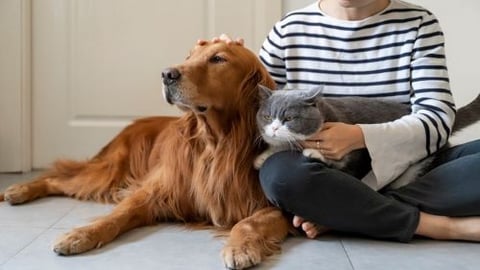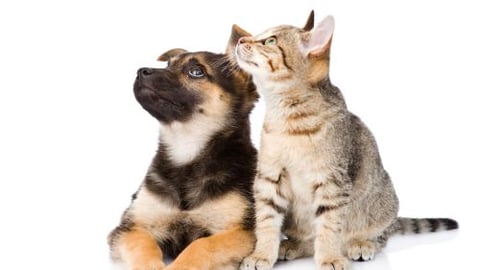3 Trends Driving Post-Pandemic Pet Category Growth
The pet category had a fantastic run in 2020, and by all accounts, the momentum is continuing this year. Driving the growth is a unique combination of three factors, including the humanization of a growing pet population and sales of premium products. As a result, for the first time ever, sales in the pet product industry surpassed $100 billion, according to data compiled by the American Pet Products Association (APPA).
“We are bullish for the coming year, projecting growth of 5.8% – well above the historical average of 3% to 4%,” says Steve King, president and CEO of Stamford, Conn.-based APPA. Based on that rate of growth, sales of pet products, including everything from food and toys for dogs and cats to veterinary services and boarding, will increase to $109.6 billion in 2021 from $103.6 billion last year.
“This past year presented a host of challenges that resulted in consumers across the country turning to their pets for comfort and companionship,” King adds. “Interestingly, the product trends we are seeing in the pet care community mirror those of consumers – a desire for a healthier lifestyle, increased focus on fitness, turning to supplements for improved well-being, and technology playing a larger role in everyday life.”
Grocers compete primarily in the largest segment of the industry, the $42 billion market for pet food and treats, which APPA data shows increased nearly 10% last year. APPA projects that the pet food and treat segment will grow 5% this year, thanks to pet population increases, with the household penetration rate of dogs and cats now at 63.4% and 42.7%, respectively. Retailers refer to this as an annuity effect that will drive increased demand for products and services for years to come as people care for their pets.
Formidable Competition Intensifies
Strong growth for the pet product category is good news for food retailers, but increased competition will make growing sales challenging.
The biggest competitive challenge is arguably online retailer Chewy. It grew its customer base 43% last year and full-year sales increased 47% to $7.15 billion, roughly double the level two years ago. The company boasts 19.2 million active customers, 70% of its sales are consumable products similar to those sold by food retailers, and 68% of its sales are to customers who have signed up for automatic replenishment, which the company can deliver next day to 80% of the U.S. population from a network of 13 distribution facilities. Chewy expects to add $1.8 billion in sales this year, according to CEO Sumit Singh, the former head of Amazon’s consumables business who joined Dania Beach, Fla.-based Chewy in 2017. He estimates that the pet market will expand to $120 billion by 2024.
“At $7 billion in net sales, Chewy is clearly only scratching the surface of the overall market opportunity in front of us,” Singh said when the company reported its 2020 results. A key reason for his bullish outlook is the accelerating penetration of e-commerce. “Online penetration rates in the retail food and supplies category are estimated to have grown from 7% in 2015 to 30% in 2020 and are expected to reach 53% by 2025, which is in line with the current online penetration rate of categories like books and electronics,” Singh noted.
Another company that believes it, too, is only scratching the surface is San Diego-basedPetco. It presents a different type of competitive threat from that of Chewy, because it operates 1,454 stores, which it’s leveraging as online order fulfillment centers in the same fashion as food retailers have embraced click-and-collect. Petco’s sales last year increased 11% to $4.9 billion, and this year, the company expects sales to rise to $5.25 billion or more.
“Our category continues to grow, powered by the millions of incremental new pets in households, which is creating an annuity for years to come,” Petco Chairman and CEO Ron Coughlin notes.
Meanwhile, the success of another retailer not normally viewed as a grocery channel competitor highlights the changing dynamics of the pet product category. Significant growth in pet products was cited as a driver of a 38.6% first-quarter same-store sales increase at Brentwood, Tenn.-based Tractor Supply Co., which operates 1,944 Tractor Supply stores and 177 Petsense stores.
As CEO Hal Lawton notes, the pet ownership rate among its customers is higher than the overall U.S. average, with surveys of its shoppers showing that 25% have recently acquired or adopted a new pet.
“New companion animal ownership acts as an annuity for our business as these puppies and kittens grow up and have growing life cycle needs,” Lawton told investors recently. “We’re also uniquely positioned to offer a growing menu of services such as pet wash, vet clinics, prescriptions and televet services. Whether it is more food treats, toys, containment and more, the humanization of pet provides us with future opportunities for growth.”
Grocers also have future opportunities for growth in a category with favorable trends, but capitalizing on those opportunities has never been more challenging, due to an evolving competitive environment.
Pet Products & Services Market Size
|
Annual Sales in Billions |
|||
|
Category |
2019 |
2020 |
2021 (Estimate) |
|
Pet Food/Treats |
$38.3 |
$42 |
$44.1 |
|
Supplies/Live/OTC Meds |
$19.2 |
$22.1 |
$23.4 |
|
Vet Care/Product Sales |
$29.3 |
$31.4 |
$32.3 |
|
Other Services |
$10.3 |
$8.1 |
$9.7 |
|
Total |
$97.1 |
$103.6 |
$109.7 |
Source: American Pet Products Association
Pet Ownership at a Glance
|
Number in Millions of U.S. Households With Pets |
|
|
Dog |
63.4 |
|
Cat |
42.7 |
|
Freshwater Fish |
11.5 |
|
Bird |
5.7 |
|
Small Animal |
5.4 |
|
Reptile |
4.5 |
|
Horse |
1.6 |
|
Saltwater Fish |
1.6 |
Source: American Pet Products Association





